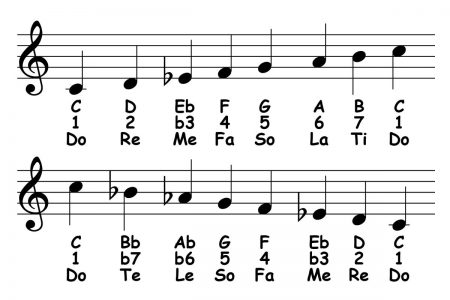
Tonic: D is the 1st note of the D natural minor scale.To learn more about this scale and others, check out my course, Learn Scales & Music Theory & Give Yourself An Upper Hand. This scale consists of the pitches, D, E, F, G, A, B♭, and C. Let’s start with the D natural minor scale. They are the natural, melodic and harmonic minor scales. There are three types of minor scales and we shall take a look at all of them here. For more info on other scales in jazz improvisation, visit: The 16 Most Important Scales in Jazz and Mastering Scales with Tetrachords Part 1 and Part 2.This lesson is all about the D minor scale.

There is much more to discover, but this should at least be a good start for some further exploration.įor more information on the melodic minor modes, visit: Cool and Unusual Applications of the Melodic Minor Scale, Use of the Melodic Minor Scale In Stella by Starlight, and Melodic Minor Soloing Over a Minor ii-V7-i.

Hopefully this article and this lick shed some light on the melodic minor mode and how it can be used in jazz improvisation. Here is the same melodic minor lick from C melodic minor used in all four contexts: Cmin(Maj7) (melodic minor mode), EbMaj7(#5) (lydian augmented mode) F7(#11) (lydian dominant mode), and B7alt (super locrian or altered mode). Lydian augment is associated with a Maj7(#5) chord, and is arguably used with less frequency than the other 3 important modes listed in the preceding paragraph. The super locrian scale is associated with a 7(#9, b13) chord or 7alt chord. The lydian dominant chord is associated with a 7(#11) scale (lydian has a #4 and dominant/mixolydian has a b7, so lydian dominant has both #4 and b7). The melodic minor chord is associated with a min(Maj7) chord. Each one of these modes is used regularly in jazz improvisation in different contexts, and is associated with a different chord. 4 Common Melodic Minor Modesįour of the most important modes of the melodic minor scale include: melodic minor, lydian dominant, super locrian (altered), and lydian augmented. Super locrian (Altered scale): 1 b2 #2 3 #4 b6 b7 8įor more information, visit the wikipedia page for modes of the melodic minor. The melodic minor scale has 7 modes just like the major scale. Thus, for the jazz musician, the melodic minor scale is 1, 2, b3, 4, 5, 6, 7, 8 when ascending and also when descending (See Figure 1). However, in jazz, scales are vehicles for improvisation, which means that it doesn’t make much sense to have two different pitch collections for ascending and descending. It ascends 1, 2, b3, 4, 5, 6, 7, and 8, but descends as a natural minor scale, with the lowered 6th and 7th (8, b7, b6, 5, 4, b3, 2, 1). In classical theory, the melodic minor is unique in that the 6th and 7th scale degree are different depending on whether you are ascending or descending.


The melodic minor scale has all of the same notes from the parallel major scale starting on the same note, except it has a b3rd instead of a natural third (since it is a minor scale).


 0 kommentar(er)
0 kommentar(er)
